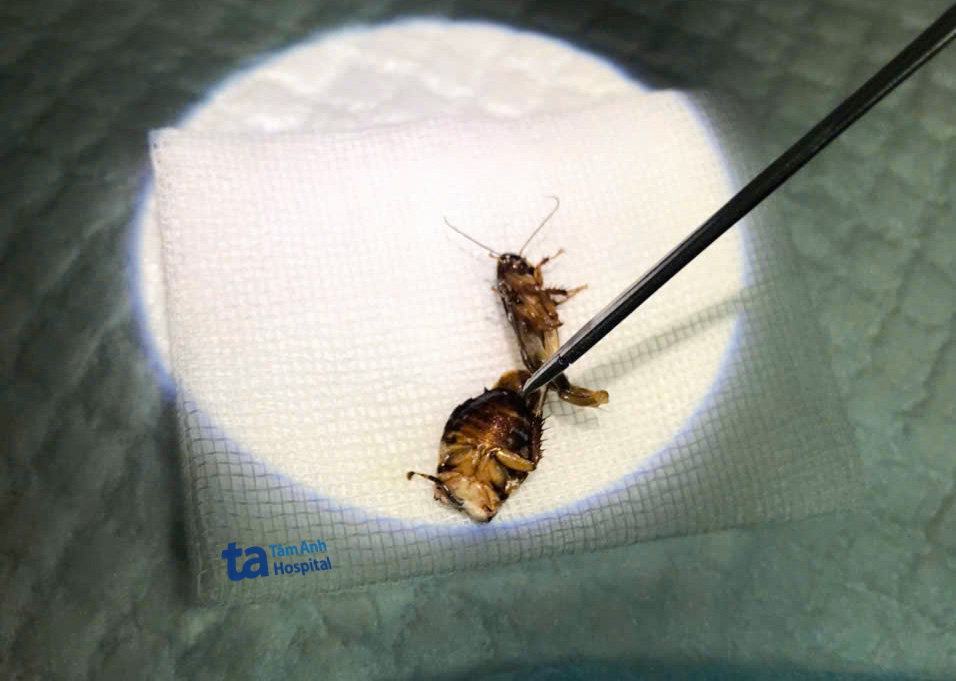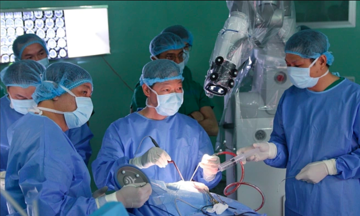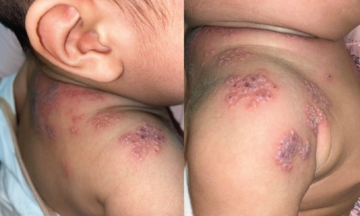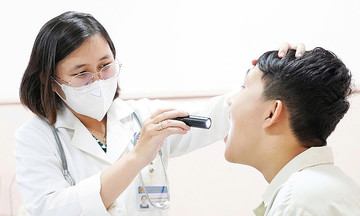Doctor Pho Thien Phuoc, from the Emergency Department of Tam Anh General Hospital in Ho Chi Minh City, removed a 3x2 cm cockroach from the patient's ear. After the procedure, Mr. Thai received ear drops to reduce inflammation and prevent infection.
 |
The doctor removes the cockroach from Mr. Thai's ear. Photo: *Tam Anh General Hospital* |
Doctor Phuoc advises anyone with an insect in their ear to remain calm and avoid inserting anything into the ear canal, as this could push the insect further in and potentially rupture the eardrum. Home remedies such as steaming or applying heated leaves should also be avoided.
Common symptoms of an insect in the ear include severe pain in one ear, the sensation of something moving, hearing loss, and discomfort. Young children may cry inconsolably or scream unexpectedly. Some cases may also involve dizziness, nausea, yellow discharge, redness, itching, or bleeding from the ear.
If an insect enters your ear, lie down with the affected ear facing upwards and apply warm saline solution to encourage the insect to crawl out. This method should not be used by individuals with a history of middle ear infections or a perforated eardrum. If you experience severe ear pain, bleeding, signs of infection, or a lodged object, seek immediate medical attention at the nearest healthcare facility for an ear, nose, and throat examination.
To prevent insects from entering your ears, nose, and throat, maintain a clean and well-ventilated home, sleep on a bed rather than the floor, and wash bedding regularly.
Nhat Thanh
*The patient's name has been changed.
| Readers can submit questions about ear, nose, and throat conditions here for doctors to answer. |












